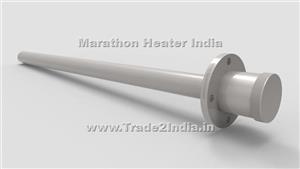MARATHON HEATER (INDIA) P.LTD.
Featured Products
Highest quality standards are achieved through the implementations of latest technology, decades of experience and everlasting moral values , which have helped us to retain our customers as well as multiply them.
Welcome to MARATHON HEATER (INDIA) P.LTD.
Cartridge Heater
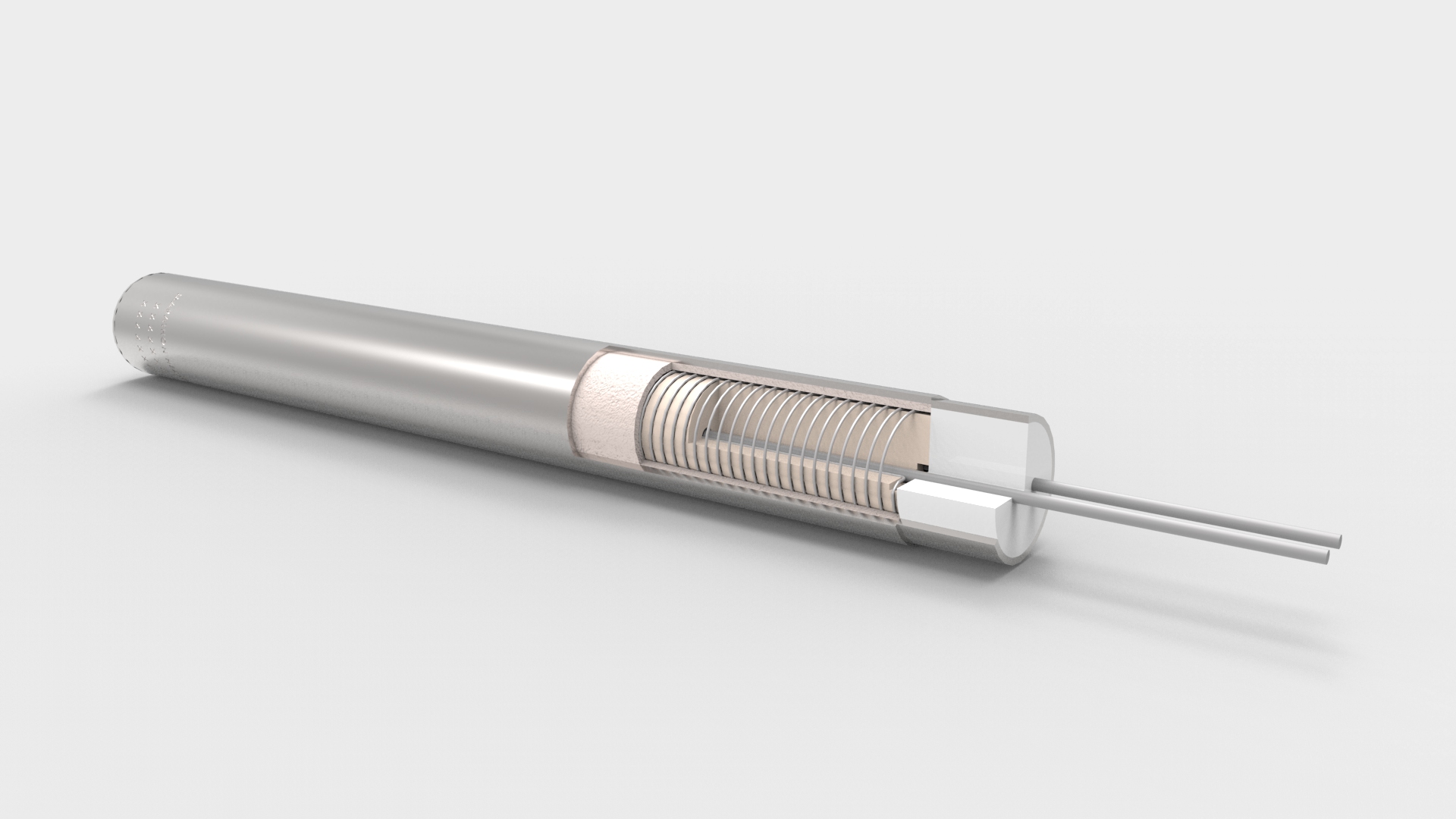
Cartridge heater often considered as component heater has a heating coil wound on a ceramic core and are cylindrical-shaped, heavy-duty Joule heating element. Electricity flows through coil when a two or three-phase voltage is applied. The electricity heats the coil and, subsequently, the cartridge sheath. The watt density (in Watt/inch2) depends on the number of spirals or turns per inch. The sheath comes in contact with the surface being heated. Insulation in the cartridge heater ensures that the heating wire never comes in contact with the sheath and protects the sheath from melting in case of any mishap. The leads that come out of the heater terminal have metal conduit, or silicon sleeves to protect from high temperature. Lead wires are often fiberglass or silicon rubber.
Ceramic Band Heater
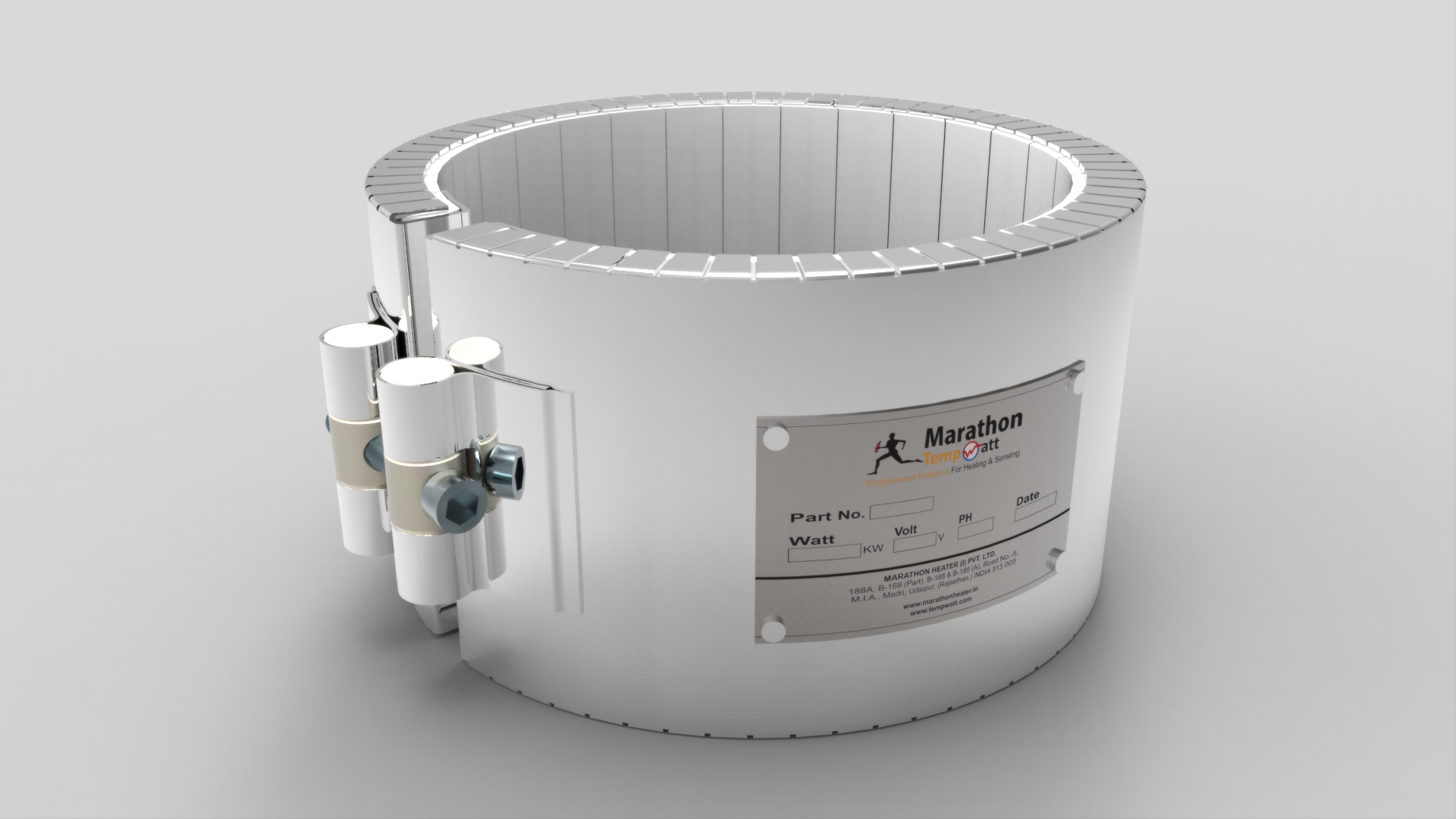
Ceramic band heaters are medium-to-high temperature heaters that can deliver up to 1600°F (870°C). The heating element (Nichrome wire) is embedded in a flexible outer wall made of interlocking ceramic tiles, assembled like a brick wall. A ceramic fiber insulating mat and a stainless steel/ Aluminized Steel jacket cover this assembly. This makes them flexible, highly efficient, prevents heat loss and reduces electrical consumption by 20%. An energized ceramic heater that operates at 1200°F internally will have around 400°F on its outside shell. These durable heaters have versatile configurations which allow selection of clamping mechanism, terminal styles, holes and cut outs and perforations. Uniform heat distribution is an added advantage of ceramic band heaters. Limitations on the width of these heaters within a certain incremental range of sizes, is due to ceramic tiles that are available in specific lengths. Ceramic Band Heaters afford customers a means to heat large cylinders from intermediate to high temperatures without concern of failures due to "Hot-Spotting". A layer of thermal insulation reduces ambient heat loss and power consumption.
Blower Assembly
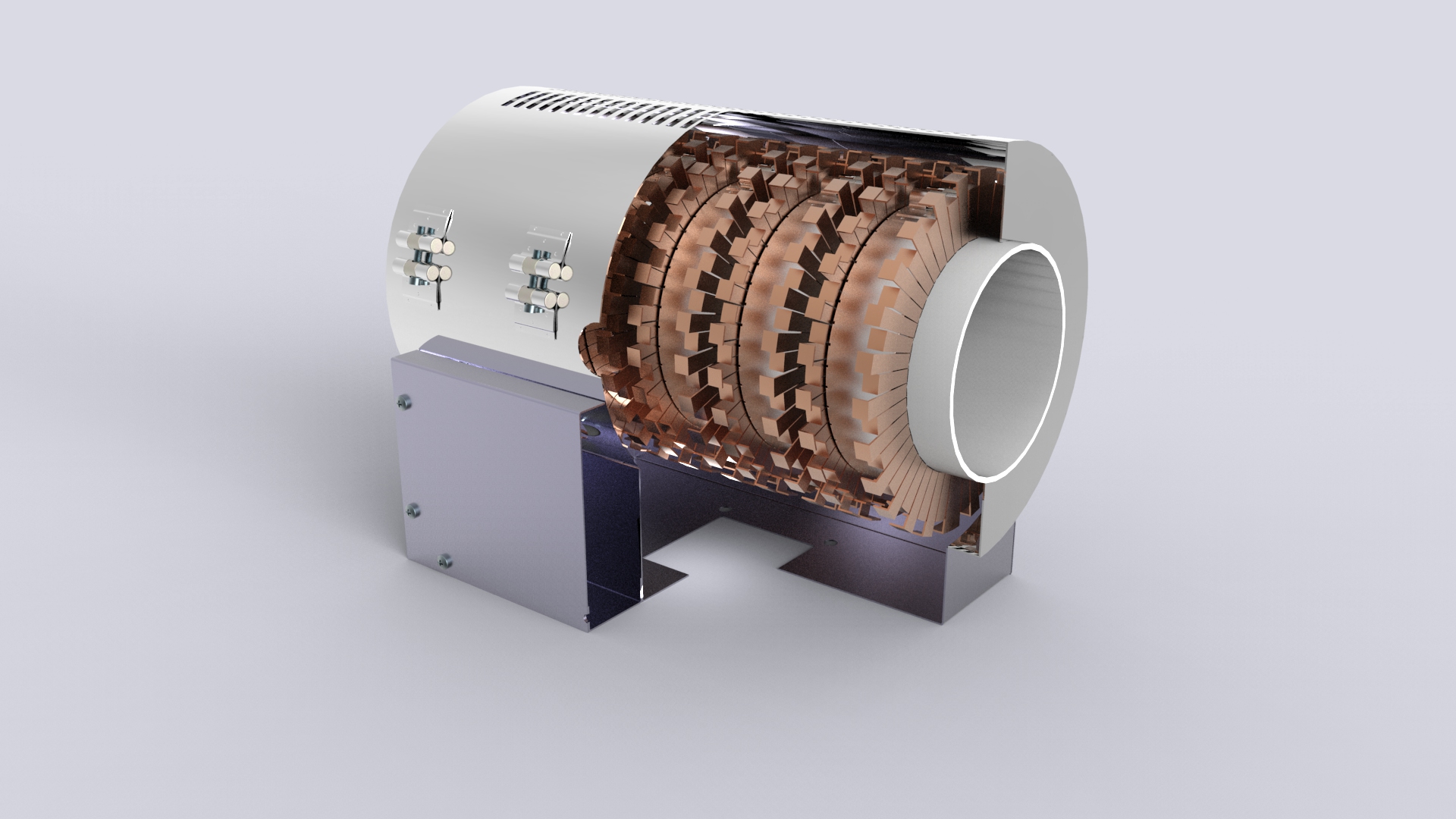
A blower assembly is used to distribute air in various kinds of equipment. It is commonly seen in cars, furnaces, and home appliances. During forging or furnace operation, air is the utility that should be available at all time in order to ensure a smooth and standardized operation.
Supplying air manually will reduce productivity and more man hour to accomplish a given task.
Mica Band Heater
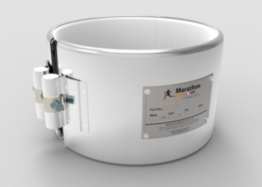
Mica band heaters offer efficient and economical heating solutions to pipes and tubes that require external indirect heating. These heaters are used to heat-up the external surface of drums or pipes for a gradual heat transfer. A mica core surrounds the precisely wound heating element, producing a thin, efficient heater. The mica core is enclosed in a continuous corrosion resistant sheath and formed. All full mica band heaters are designed with closed ends to protect against contamination. The maximum sheath temperature is 800°F and is used mainly in plastic industry. Terminal boxes can be provided that protect terminations and also have the option of temperature controllers to help regulate applied heat. Mica is used as it provides exceptional insulation, dielectric strength and heat transfer capability for long heater life. Insulation is required to direct the heat to the application, avoid heat loss and slow heat-up time. In order to maintain a balance between the insulating characteristics of mica and the ease of heat transfer from the heating core, the thickness of each mica layer is cautiously selected. Various terminations are available with mica band heaters keeping in mind the diameter, width, voltage, operating temperature and cost. Several types of dimension, wattage, voltages and material are available to suit different applications.
Silicone Rubber Heater
Famously known as “flexible heaters”, silicone rubber heaters are composed of fiberglass reinforced silicone rubbers that are rugged, moisture and chemical resistant, flame retardant, have high dielectric strength and are non toxic. Wire or etched foil heating circuits are positioned between two “wafers” of silicone which provides flexibility and strength. Design versatility permits zones of higher or lower heat concentration as needed. They are capable of flexing and will conform to contoured surfaces. They can also be pre-formed to complex shapes and can withstand mechanical shock and vibration. Designed to meet the requirements of various low and medium temperature applications, they improve heat transfer; speed warm ups, and decrease wattage requirements. The silicone Fiberglass-reinforced silicone rubber gives the heater dimensional stability without sacrificing flexibility. Thermostats or RTD can be mounted for temperature control. Teflon lead wires can exit any location to make suitable connections. Different mounting methods such as pressure sensitive adhesive, field applied adhesive, Velcro etc. are available according to the requirement.
Duct Heater
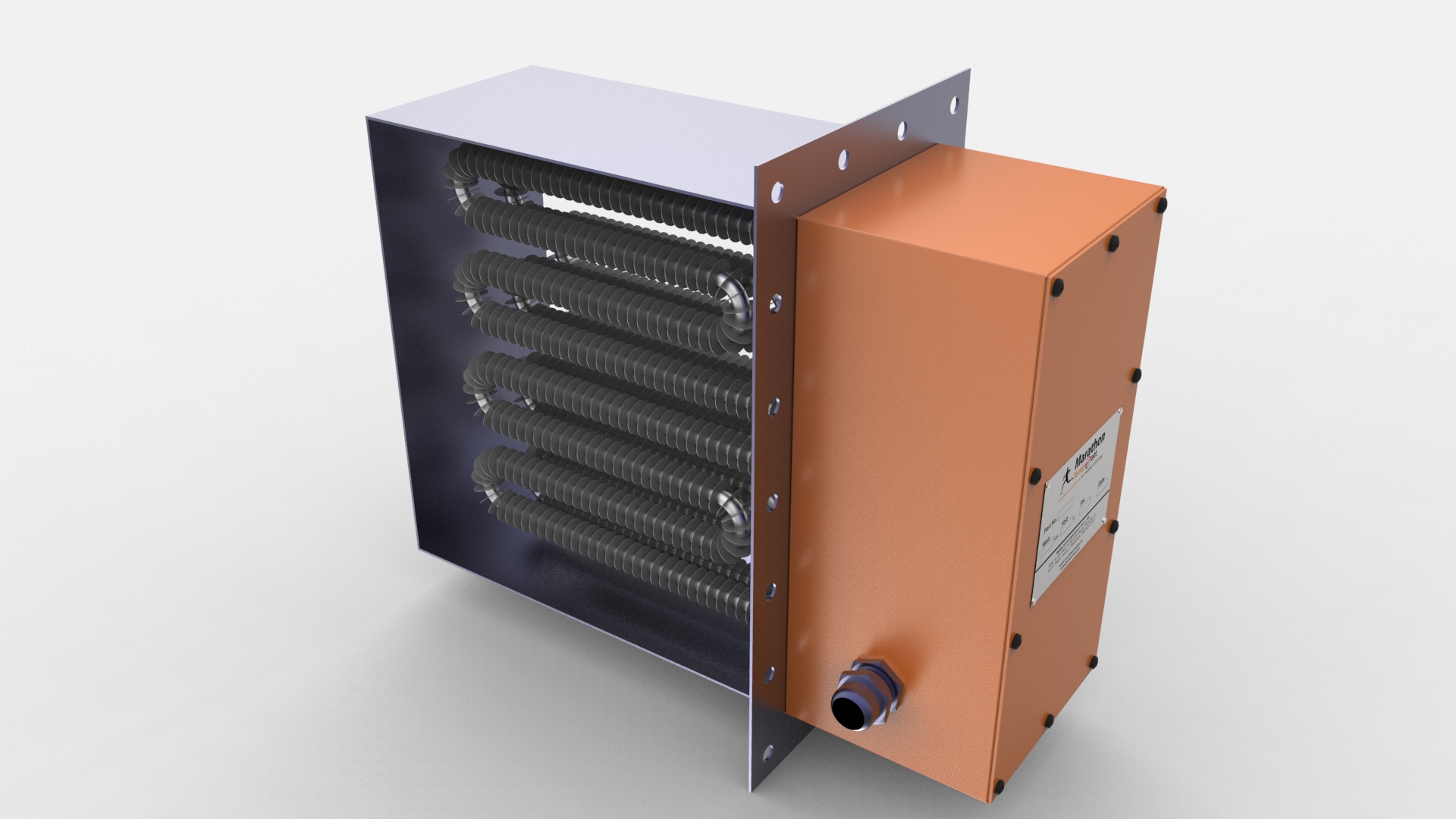
Duct heaters are heat transferring devices which are an assembly of heating elements mounted in a frame or duct. Preferably used for non-pressurized air-heating systems, there are three types of duct heaters available: open coil, tubular or finned tubular heating elements that are either flanged or inserted in the duct. The individual elements are removable through the housing of the assembly, which eliminates the need to pull the complete heater from the ductwork. This reduces downtime costs because the heating elements can be replaced individually. Being the most easily adaptable heating solution, they are easily installed in applications requiring a wide range of temperature versus air flow combinations and offer greater reliability, energy efficiency, quicker response time and reduced infiltration from the air steam. Duct heaters can be equipped with a temperature control system and wired in various power configurations
Our Vision
* To embrace new technologies and methods. * To give unsurpassed products and services to the clients. * To constantly look for improvement and changes.








